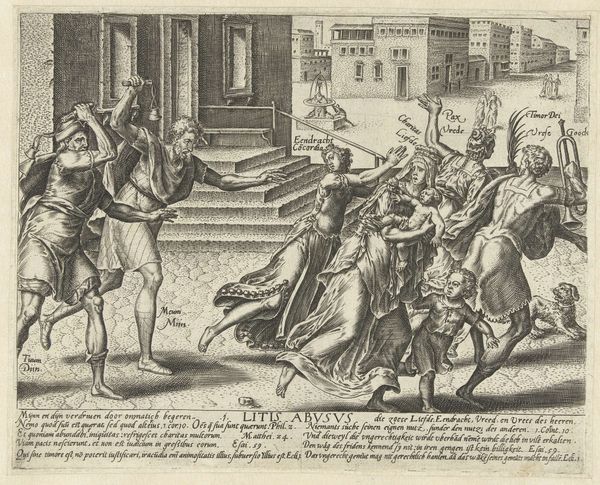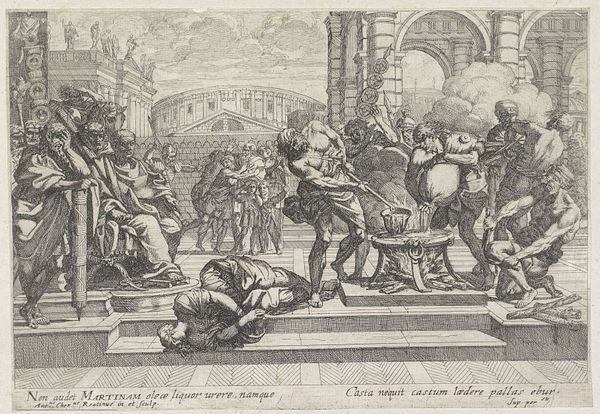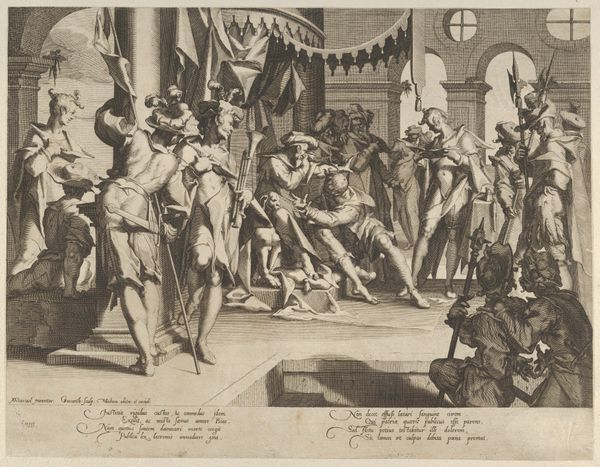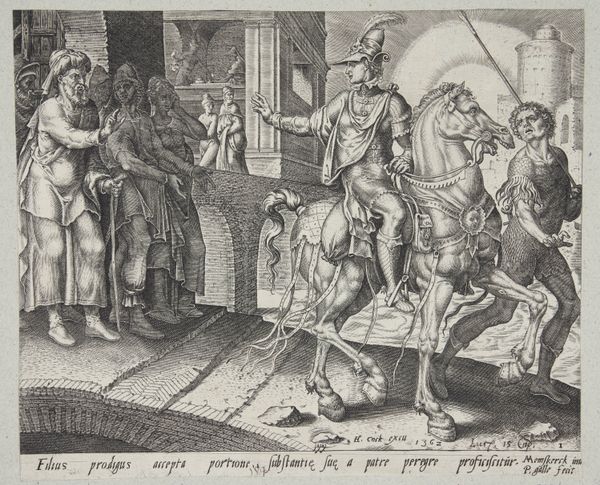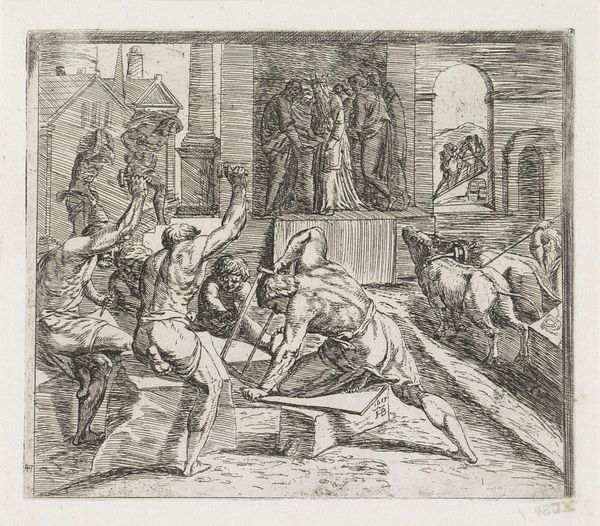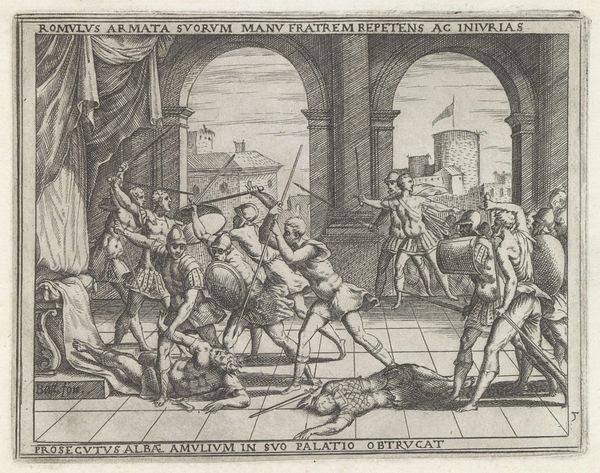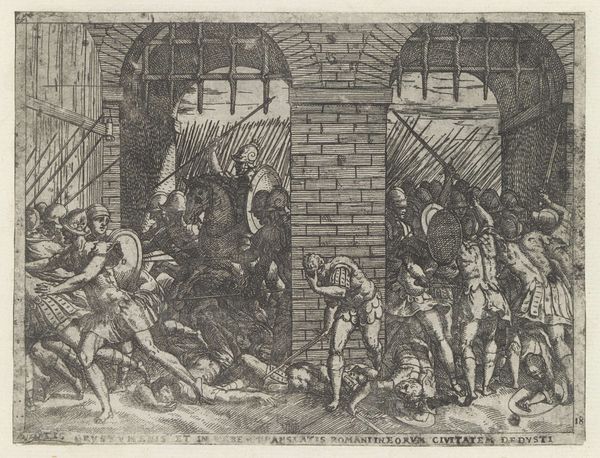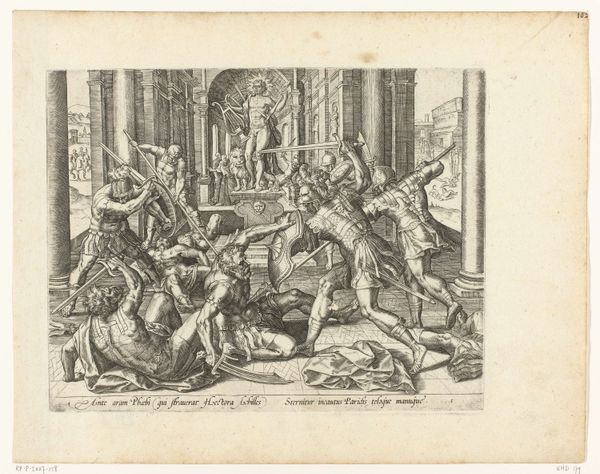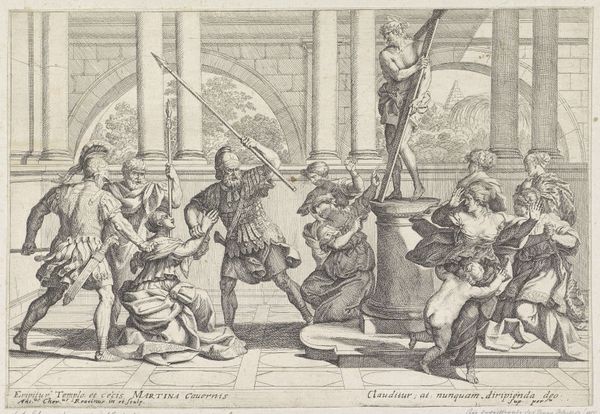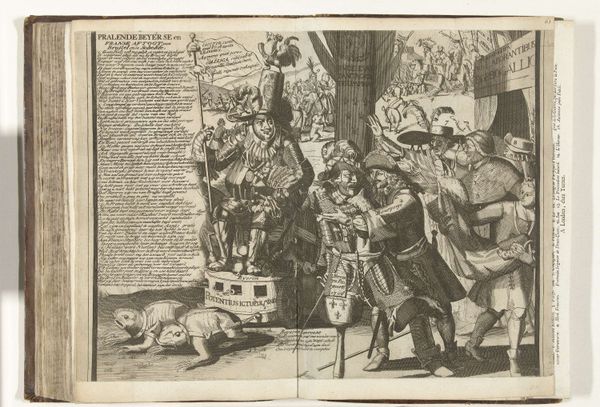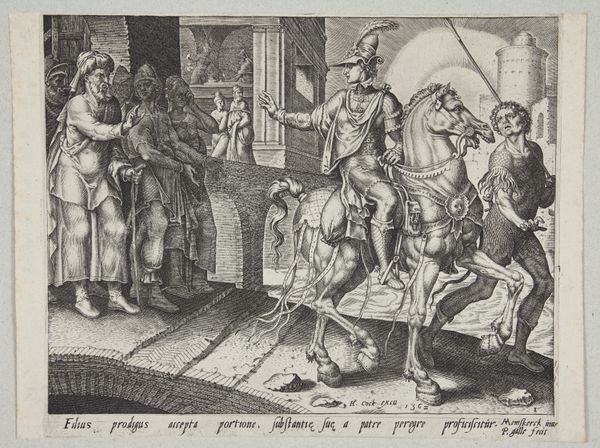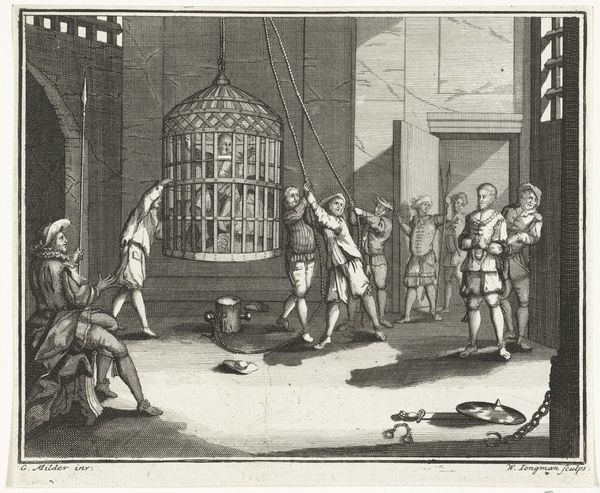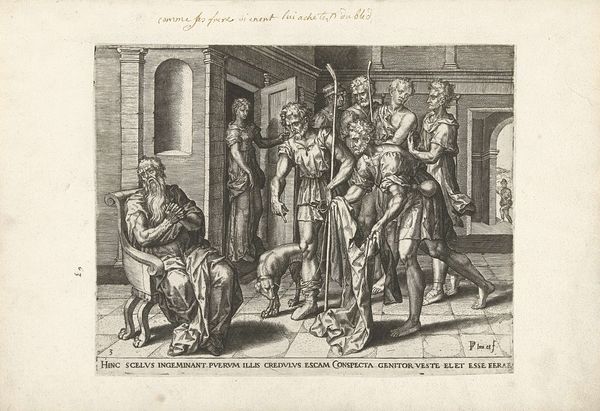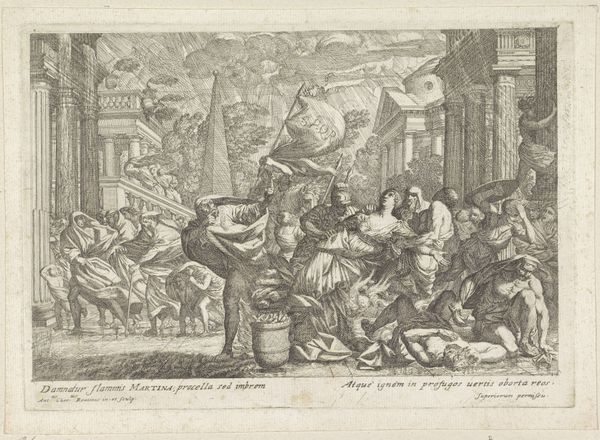
print, engraving
#
narrative-art
# print
#
mannerism
#
figuration
#
line
#
history-painting
#
engraving
Dimensions: height 135 mm, width 179 mm
Copyright: Rijks Museum: Open Domain
Curator: Giovanni Battista Fontana rendered this engraving, titled "Tarpeia Overwhelmed by Sabine Soldiers," circa 1572-1573. Its narrative depiction exemplifies mannerist stylistic qualities and represents an episode rooted in historical accounts. What's your immediate reaction? Editor: Violence, betrayal, avarice! I can feel it intensely. There's a dynamic energy—all these bodies, limbs akimbo—conveyed solely through Fontana's forceful use of line. It’s brutal and precise. Curator: Indeed. Fontana’s expert employment of the engraving technique—the varying weight of the lines and densely cross-hatched areas—enhances the overall dramatic effect. It manipulates the distribution of light and shadow within the composition and directs our eyes accordingly, thus crafting a rich textural landscape. Editor: The engraving’s inherent contrasts, stark blacks and whites, undeniably contribute to the atmosphere of imminent tragedy and heighten its moral weight. Here is a stark depiction of corruption in society's history. Curator: It's impossible to discuss this image outside of its cultural significance and reception, of course. This scene is based on the legendary Roman woman Tarpeia, who betrayed Rome to the Sabines for gold bracelets, only to be crushed to death by their shields, quite a price for treachery! This piece acts as both art object and morality lesson, a warning against avarice, deeply entangled within Rome’s foundational myths. Editor: These historical engravings gained traction precisely for their capacity to serve didactic functions within the 16th century. They acted as visual anchors, constantly reiterating socio-political principles to an expanding public, whether they visited a museum or kept this on a wall at home. Curator: Precisely. Look closely at the mannerist elements, for example: those exaggerated poses, the distorted proportions. See how these heighten the emotional intensity of the narrative. The visual exaggeration allows for a deeper resonance of the story itself, furthering its didactic effect. Editor: Reflecting on our discussion, the political intent is obvious when considering its lasting appeal to its target viewership. We see art as both historical record and active instrument within society. Curator: Fontana uses dramatic technique and compositional manipulation to underline a historical cautionary tale.
Comments
No comments
Be the first to comment and join the conversation on the ultimate creative platform.
